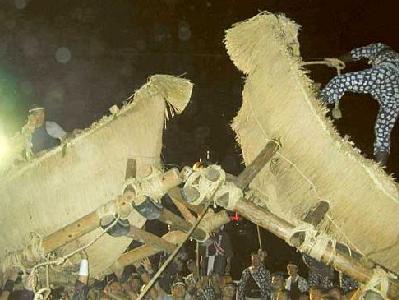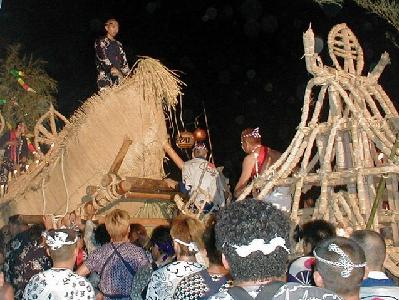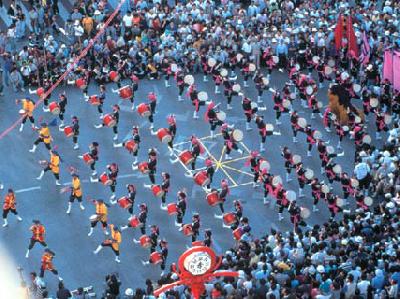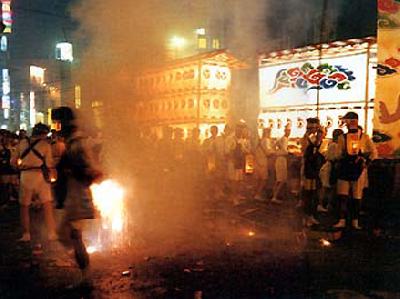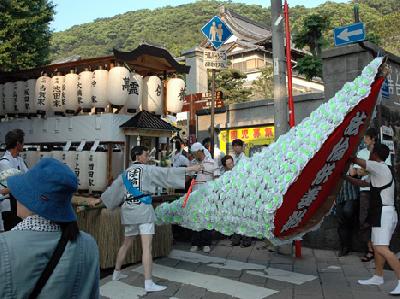|
Okuri-bon Festival is a typical summer event held on August 15 and 16 in Yokote City, Akita Prefecture. It was first held to appease the souls of the victims of the great famine during the Kyoho era (1716-1735). The people in Yanagi (Willow) Town (present-day Chuo-cho) made a houseboat, onto which they carried a willow tree, the branches of which had strips of paper with the Buddhist names of the dead victims written on them and headed for Janosaki riverside in the downstream.
Today every town in the city has the boathouse to join the festival. The boathouse is 7 m long, 2 m wide, 4 m in height and 600 to 800 kg in weight. A boat need at least 20 to 30 rowers, that is, one town team is composed of 40 to 50 rowers including standbys.
All the boats send the spirit off to the riverside in Janosaki and return to their town. The climax is when they get together under the Janosaki Bridge, where they try to be the first to return home and scramble, making their boats bump hard against each other.
Today every town in the city has the boathouse to join the festival. The boathouse is 7 m long, 2 m wide, 4 m in height and 600 to 800 kg in weight. A boat need at least 20 to 30 rowers, that is, one town team is composed of 40 to 50 rowers including standbys.
All the boats send the spirit off to the riverside in Janosaki and return to their town. The climax is when they get together under the Janosaki Bridge, where they try to be the first to return home and scramble, making their boats bump hard against each other.
| [+ADDRESS] | 
|

